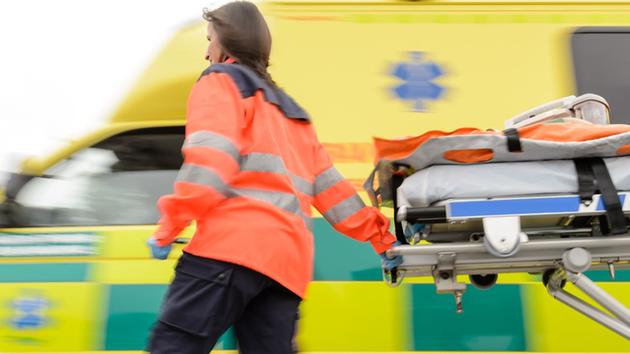Helicopters were requested to remove them from the mountain peak after it was determined it would be easier for the soldiers to complete scaling the mountain rather than going down the mountain, officials said.
The 11 Green Berets, who belong to the 10th Special Forces Group based at Fort Carson, Colorado, were conducting a mountain training exercise Thursday at Longs Peak that was only supposed to last the day, according to Lt. Col. Sean Ryan, a spokesman for the 10th Special Forces Group,
But two of the soldiers got altitude sickness and the rest of the group decided to stay on the mountain overnight to tend to their colleagues, Ryan said.
"Late last night, Rocky Mountain National Park staff were notified that a group of ten people were requesting assistance on Kiener's Route on Longs Peak," said Kyle Patterson, a spokesperson for the park. It was unclear why park officials said 10 people while military officials said 11 people.
"A few members reported having some degree of distress and were having difficulty continuing up the route," Patterson said. "The group continues to self-rescue by assisting each other to climb to the summit of Longs Peak."
The soldiers determined it would be easier to proceed to the mountain's summit rather than to climb down to a lower elevation, Ryan said.
"Rocky Mountain Park rangers are planning evacuation efforts from the summit of Longs Peak via helicopter, weather and conditions permitting," Patterson said. One helicopter has begun to conduct reconnaissance efforts for the best way to proceed.
Forty-three park personnel have been involved in helping to resolve the incident, Patterson said.
Ryan stressed that none of the soldiers was missing as had been indicated in early social media descriptions of the incident.
"No one is lost, missing or injured," Ryan said.
Altitude sickness can be a factor in mountain training, he said, even for highly-trained and fit special operations forces like the Green Berets.











 PHILADELPHIA
— The Coast Guard rescued three people Wednesday after the boat they
were on began taking on water in Cape May Inlet, New Jersey.
PHILADELPHIA
— The Coast Guard rescued three people Wednesday after the boat they
were on began taking on water in Cape May Inlet, New Jersey.